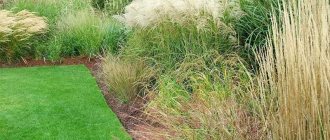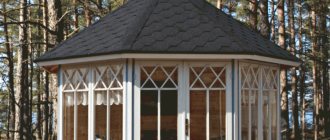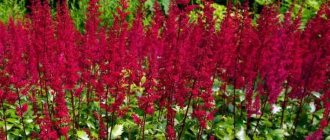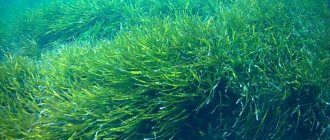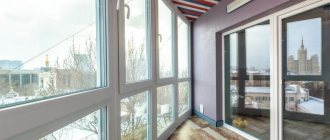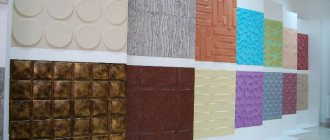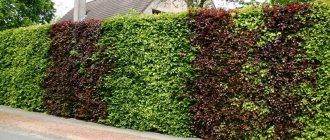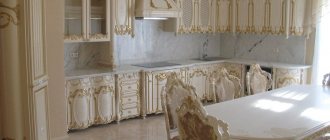What conifers should be like
The requirements that gardeners place on coniferous plants are completely fair.
- Firstly, spend the winter without shelter and at the same time not freeze in the cold. Many people consider the process of insulating plants troublesome, as it takes a lot of time and effort. Therefore, this criterion is important for summer residents.
- Secondly, the plant should not burn when exposed to direct sunlight.
- Thirdly, conifers should not dry out due to lack of moisture and, conversely, should not get wet on wet soil. And finally, they should grow well in any soil except waterlogged soil.
Main types of conifers
In order to choose the right coniferous plants for your garden, you need to know and take into account the characteristics of each of the existing species. This will allow you to correctly combine them with each other, creating a unique design.
A pleasant feature of conifers is their relatively unpretentious appearance.
Juniper
It is a shrub that can have a wide variety of shapes (tree-like, bush-like, creeping), and differ in the color of its needles and fruits. Loves sun and grows well in well-drained soil. Does not require special care or attention after planting.
Even a person who is not particularly experienced in design can successfully fit them into the landscape.
Thuja
It is especially popular among gardeners and summer residents due to the ability to easily form a crown and propagate using cuttings. Thuja saturates the air with pine scent and beneficial substances. This dacha conifer easily tolerates frost, but requires regular shaking off the snow from the branches. Provided there is good drainage, the plant can withstand not only cold, but also drought, prolonged rains and other unfavorable conditions.
Evergreen thujas are very attractive and easy to care for.
Pine
It can grow in a wide variety of soils, but requires well-lit areas. There are many varieties that differ in size (from 50 centimeters to several meters in height), variety of seedlings, and color of needles. The most popular species is mountain pine, which is the most unpretentious and does not require special care.
Pine is highly resistant to drought, so it does not need watering, as natural precipitation is sufficient for it.
Spruce
It is recommended to plant at some distance from the house and other buildings, since the plant has an extensive root system that can harm them. Spruce grows well in areas with sufficient lighting. Blue spruce, which has the original color of its needles, is popular.
Spruce is simply a stunning tree for an ornamental garden.
Fir
It has an interesting and attractive appearance, and is also distinguished by its healing properties, which make it popular among gardeners and summer residents. There are more than 50 species, among which preference is given to low-growing, dwarf and creeping varieties. The plant grows well in any soil, but does not tolerate wind well. Fir also reacts to air purity, so it is suitable for dachas that are located far outside the city limits.
Fir is a persistent plant that takes root well at any time of the year.
Larch
A special species that sheds its needles with the onset of winter. Larch prefers fertile, well-drained soils, and is also very demanding in terms of good lighting (with the exception of the Japanese category).
Larch decorates the garden with a variety of colors starting from the end of April.
Creating a coniferous garden
To create a small coniferous garden, you need to select plants of different types and shades, differing in height and shape.
You can beautifully design an alpine slide on the site. Plant conifers between the stones, but make sure that the taller plants do not obscure the shorter ones.
Large stones can be beautifully “covered” as if by a blanket of creeping representatives of coniferous plants. Lay a garden path from the rock garden to your house or gazebo, thereby making the alpine slide the central composition in your garden decor.
And to make your garden always look neat and well-groomed, sprinkle open areas of the ground with geotextiles. With it, you won't be afraid of weeds.
The most popular varieties and types of fir
Fir is not as popular as spruce or juniper. But in terms of decorative characteristics they are in no way inferior to them. Its branches grow densely, the needles are soft and fluffy, and the crown is well formed. In addition, fir is rich in healing essential oil, so the air in the area will also be healthier.
Balsam fir (Abies balsamea)
Balsam fir Nana. Photo by the author
The dwarf form Nana, up to 0.5 m high, is distinguished by a rounded crown shape. Spreading, dense branches grow horizontally and reach 2-2.5 m in diameter. The needles are short, thick, dark green, with white and blue stripes on the underside.
Smooth-fruited fir, or subalpine fir (Abies lasiocarpa)
Smooth-fruited fir Arizonica Compacta. Photo by the author
The popular dwarf form Arizonica Compacta resembles silver spruce. The wide-conical, regular, dense crown with strong branches reaches a height of 0.8 m by the age of 10, the annual growth of shoots is 3-5 cm, the needles are silver-blue, up to 3 cm long, non-thorny, densely covering the shoots.
Korean fir (Abies koreana)
The miniature form of Kohout's Icebreaker fir with a compact, spherical crown at 10 years of age does not exceed 0.3 m in height and diameter. The spirally twisted needles are interesting, while the upper light green side is not noticeable and the silvery-white underside of the needles is revealed.
Korean fir Kohout's Icebreaker
The compact crown of the Tundra shape reaches no more than 0.4 m in height and 0.6 m in diameter by the age of 10; the dark green needles have a light underside.
Korean fir Tundra. Photo by the author
Juniper as a decorative component of the garden
Juniper is very unpretentious to grow. It is able to grow both in sunny areas and in the shade. However, the soil should not be very wet.
Juniper is a unique plant. Imagine, it purifies the air from various microbes, and also helps with headaches and nervous disorders, just inhale its healing aroma. Since ancient times, this plant has been used in the treatment of various diseases.Juniper belongs to the Cypress family and grows up to 20 meters. The shape can be either a shrub with spreading branches or grow like a tree with a crown in the form of a pyramid or cone.
The plant usually blooms in June and produces fruit in late summer. The berries have loose brown pulp, which is used in medicine.
Be sure to plant this amazing plant in your garden and enjoy its medicinal aroma and stunning views.
Where is the best place to plant coniferous plants on the site?
Each type of conifer has its own characteristics and the best combination options. Dwarf species look great on hills, and medium-sized ones are planted as the main plants of flower beds. There are many photos of the location of conifers in the garden.
A garden or park will be attractive not only in summer, but also in winter.
The location of conifers on a site depends on its size. In large areas, you can plant plants anywhere, using them as a backdrop. Alpine slides are created with conifers or used in flower beds located in front of the house. Conifers can be planted near the gazebo and along the paths. A small area can also be decorated with conifers by planting several bushes or a low-growing coniferous tree near the house.
The crown of most conifers has the correct shape; it does not require too frequent procedures for its formation and pruning.
The place of pine in garden decor
These beauties from the forest will be a worthy addition to your garden. They grow well in open areas with plenty of sunlight, tolerate drought and sandy soil, but do not like constant waterlogging.
Pines produce phytoncides, which have a good effect on the human nervous system and lungs, and cleanse the environment of fungi and harmful bacteria.
Pines are very unpretentious and tolerate severe frosts and dry air well. For planting, seedlings no older than five years are best suited, but do not dig them up in the forest, but purchase them from a botanical garden or nursery. Here, the planting material is already prepared for planting, and the tree from the forest will most likely die within a year.
The seedlings are planted in a hole to a depth of 1 meter, after adding nitrogen fertilizers and a mixture of sand, clay and topsoil.
There is no need for pruning and watering, but young seedlings need to be fed with mineral fertilizers.
Unusual ornamental coniferous plants
To create a unique and stylish decor for your home or garden area, you can use unusual varieties of coniferous plants:
- the very slowly growing semi-dwarf spruce “Glauca Globosa” grows up to three meters in adulthood and has a rounded and dense above-ground part with silver-blue, thick, prickly needles and short shoots, resistant even to city smoke and car soot;
- in rockeries and small group compositions, a unique nest-like dwarf form of Norway spruce “Nidiformisс” , which has a dense cushion-shaped crown, represented by shoots that “fan” out from the center;
- the inverted weeping form of the “Inversion” spruce has a very narrow and uneven crown of almost vertically falling shoots, as a result of which the lower branches are beautifully located on the surface of the ground, decorating it with thick, dark green and shiny needles.
Shade-tolerant hemlock and microbiota from the cypress family also look very unusual in the home landscape.
Charming spruces
Spruce trees grow well in the shade on moist, but not waterlogged, soil. They may die from drought.
Coniferous trees in the garden, as we have already seen, look very decent. This also applies to spruce. Typically, spruce trees take a long time to grow and grow very tall with spreading branches, so not every owner decides to plant a spruce on his property.
But if you still decide to take this step, then in the future you will get a beautiful tree that will delight you all year round.
On the eve of the New Year and Christmas, the tree can be decorated right on the street with large balls and garlands, creating a festive mood for yourself and passers-by.
Blue spruce
A more mature version of the dwarf blue spruce, this tree has a gorgeous blue color and spiky needles. There are a large number of varieties available.
Name: Piceapungens
- Growing conditions: full sun and well-drained soil.
- Size: Varieties can grow up to 20 meters.
- Why it's worth growing: Silvery-blue fuzzy needles.
Different zones have their own predominant coniferous tree species; in colder regions - pine and spruce.
Conifers and shrubs are not only versatile garden ornaments, but also provide important winter refuge for birds, and many small mammals depend on their seeds for their livelihoods. The value of conifers as nesting sites is another reason to plant more of them.
European spruce
This spruce has a cone-shaped crown and reaches a height of 30 meters. The first ten years it grows slowly, and then up to 70 cm per year. Shade-loving and frost-resistant crop. Typically, these coniferous plants are used in the landscape design of city parks, squares and alleys.
The most popular types and varieties of fir trees
Mini conifers are very popular among gardeners. They are compact, look good in small flower beds, and have crowns of different decorative shapes.
Canadian spruce (Picea glauca)
The most popular compact decorative form of Canadian spruce in our gardens is Conica; it was found at the beginning of the last century in Canada and gave rise to a whole group of dwarf varieties. Conica spruce is distinguished by a thick, dense, pointed columnar crown with light green soft needles. Per year it grows in height by 6-10 cm, in width by 3-5 cm, maximum height is 3-4 m.
Canadian spruce Conica
Mutants of Canadian spruce Conica are Laurin forms with extremely weak growth, not exceeding 1.5 m in height; Gnom with a conical crown, gray-green needles, growing annually by 3-5 cm and others, often sold under the name Conica.
The Nana form attracts with a wide, rounded crown up to 1-2 m high with numerous, dense, flexible branches and blue-gray needles. Also interesting are the dwarf forms of Echiniformis - a very slowly growing plant, with yellow-green needles with a bluish-gray bloom, at the age of 30 years it can be 0.5 m high and about 1 m in diameter and Zuckerhut with bright green, very soft needles, dense , conical crown with a pointed top, height 1.5 m and diameter up to 0.8 m.
Prickly spruce (Picea pungens)
The popular form Glauca Globosa has a loose crown at a young age; over time it becomes flat-rounded, with very densely spaced branches. The height of an adult plant is 1.5-2 m, crown diameter is 2-3 m, annual growth is 8 cm in height, 10 cm in width, the needles are needle-shaped, thick, slightly sickle-shaped, silver-blue.
Prickly spruce Glauca Globosa
The Moll form with a dense, wide-conical crown and bluish-white needles and the squat Montgomery form with gray-blue needles are distinguished by their slow growth.
Some semi-dwarf forms of prickly spruce are interesting. The Baby Blue Eyes form with a dense, pyramidal crown and long bluish-blue needles reaches a height of 4-5 m in adulthood.
The original form of Bialobok is named after the author, Polish gardener Jan Bialobok. The young tree has an asymmetrical crown, over time it becomes broadly conical, its height at the age of 10 years is about 2 m. This form is especially attractive in the spring, when young growths with a straw-yellow color appear against the background of bluish-green needles.
Spruce Bialobok
Norway spruce (Picea abies)
The widespread form of Acrocona with a wide-conical crown 2-3 m high and 2-4 m wide is distinguished by ascending and arched drooping shoots with dark green needles. The abundantly formed reddish-brown, hanging cones are attractive.
Norway spruce Acrocona
The miniature form of Lilliput at a young age has a dense, cushion-shaped crown, then becomes cone-shaped, at the age of 10 years it does not exceed 0.6 m.
Norway spruce Lilliput
The Little Gem form can be classified as microscopic, its growth is 2-3 cm per year, the shoots rise obliquely upward and form a cushion-shaped crown with a nest-like depression. The needles are thin, thick, light green.
Norway spruce Little Gem
Little Gem spruce needles. Photo by the author
The round or nest-shaped crown of the Nidiformis form is formed by fan-shaped, obliquely growing branches, its height is up to 1.2 m, width up to 2.5 m, the needles are light green.
Norway spruce Nidiformis
The miniature form of Pusch with a dense, rounded crown at the age of 10 years does not exceed 0.3 m in height and 0.6 m in diameter. The numerous reddish-purple young cones that form at the ends of the shoots look attractive.
Norway spruce Pusch
One of the ancient forms of Pygmaea with a rounded crown no more than 1 m high and light green needles is common in gardens. Thanks to its narrow, columnar, dense crown and dwarf size (height no more than 2 m at the age of 30 years), the Will's Zwerg form is recommended as a Christmas tree for small areas.
The Pumila Glauca form with a flattened, flat-rounded crown is popular. With age, the lower branches droop in a trail and lie on the ground. The needles are thick, dark green with a bluish tint. Plant height no more than 1 m, diameter 4-5 m.
Norway spruce Pumila Glauca. Photo by the author
Serbian spruce (Picea omorica)
Serbian spruce Nana
The most popular is the semi-dwarf form of Serbian spruce Nana, 4-5 m high and 3 m in diameter. The crown is dense, wide-columnar, and the needles are dark green.
Black spruce (Picea mariana)
Black spruce Nana
The dwarf form of Nana with a rounded crown at the age of 10 years reaches about 0.3 m in height and 0.8 m in diameter, the needles are thin, silvery green.
Prickly spruce
Designers use this green beauty with a pyramidal crown for landscaping. It got its name because of its sharp needles, several centimeters long, with a varied color palette: from blue and green to gray and even white.
But the beautiful color will only appear if the tree grows in the sun. Tolerates frosts and strong winds well, loves moist and loose soil.
Larch
Because of its controversial appearance, larch is the subject of controversy even among some botanists who are trying to understand the question of whether larch is a coniferous or deciduous tree.
Thanks to the research, it was possible to find out that this tree belongs to the coniferous type of trees, because it has a number of characteristic features.
If the tree grows in favorable conditions, it can grow up to 50 meters in height and have a girth of more than 1 meter.
It has light green needles and can also grow cones. They, in turn, have a conical shape, a light burgundy color with a brown admixture. This is one of the most obvious facts indicating that the tree is a coniferous type. Another obvious feature of the coniferous type is its long life expectancy. Larch can grow for 300-500 years.
Dwarf coniferous crops for a summer cottage
If you own a small summer cottage, then there is simply no room for growing large coniferous trees. You will benefit from dwarf conifers for the garden. Moreover, crops that in adulthood, which is from 30 to 50 years, are no taller than a person can be considered dwarf.
It is low coniferous trees that are now very popular. Dendrologists from Holland identify several groups of dwarf conifers.
Classification of dwarf coniferous crops:
- Full-grown: every year they grow by 30 centimeters and after 10 years they reach 3 meters in height.
- Semi-dwarf and medium-sized: reach a height of no more than 30 centimeters.
- Dwarf: during the entire life cycle they grow up to 15 centimeters.
- Mini-dwarfs: the maximum height of crops is no more than 8 centimeters.
- Microdwarfs: reach a height of 3 centimeters.
This division of crops is very conditional, but it will help determine the choice of conifers for planting in small areas.
Let us highlight the advantages of dwarf varieties:
- they are exact copies of their larger originals, which allows you to become more familiar with the stages of growth and development;
- take up little space. Some species can even be grown at home on a windowsill.
- well suited for decorating rock gardens;
- They winter well under snow cover.
Let's talk about the disadvantages:
- susceptible to fungal attack. In this regard, mandatory treatment of plants is necessary;
- due to the fragile crown in spring, branches may break off during winds;
- do not reproduce well;
- fade in the sun;
- The life cycle of many species is short.
Use of coniferous plants by height
Conifers in a summer cottage can have very different heights. This parameter is one of the most important; it should be taken into account when selecting varieties for decorating a garden or plot. The following types of conifers exist:
- Tall. Various types are used to decorate a large area and serve as an excellent background for other plants. In a small area, you can plant one tree, which in a few years will become its main accent. The most popular tall conifers are plants with the following names: Skyrocket juniper, Hoopsii spruce, Brabant thuja, plain fir, Canadian yew, European pine and others.
- Medium size. Used to design paths and create unique compositions. The most commonly used are Konika spruce, mountain pine and Pug pine, as well as oriental thuja, yew and others.
- Short. They are compact in size and are an indispensable element of garden compositions. Popular ones are Thuja Amber Glow, Thuja Danica, Thuja Hoseri. Conifers are low-growing in the garden and their design photos can be found on the Internet.
- Creeping or creeping. Most often they are used to create a “spiky lawn” or original borders. The most popular types: Blue Chip juniper, Green Carpet juniper, Depressa Aurea juniper.
Interesting. To form an aesthetic crown in fast-growing trees, pruning, shearing and pinching are used.
It should be borne in mind that when creating any composition in the garden using conifers, they are planted first, and then all other species.
An important advantage of coniferous plants is the consistency of their appearance at different times of the year.
Photos of coniferous plants for the garden
Total
Category: Landscaping ideas
Watch the video: Decorative conifers for the garden
Nursery specialists advise purchasing large-sized ones in the winter. Planting trees in winter ensures a high survival rate in a new area.
Winter planting is recommended after slight freezing of the soil. The optimal planting period is from late autumn to early spring at temperatures from -15 0C. Since coniferous trees for the garden at this moment are in a state of deep dormancy, its root system is less susceptible to various damages, and the chances of taking root in a new place increase exponentially.
It is worth taking into account the fact that in winter the root system of the tree freezes completely. This process occurs gradually, with the air temperature significantly lower than the ground temperature. When digging up plants, their roots are protected with an earthen lump, the size of which should correspond to their size. If you allow the coma to weather and freeze, the root system will die. Accordingly, the tree will not wake up in the spring.
Modern landscape design is unthinkable without majestic spruce trees, luxurious thujas, mighty oaks, serious larches, frivolous pines; dwarf conifers for the garden are also always held in high esteem. Woody compositions of large trees are a timid reminder of the forest, noisy and green in summer, silent and thoughtful in winter. Coniferous plants for the garden photo:
leave a comment
Click to cancel reply.
